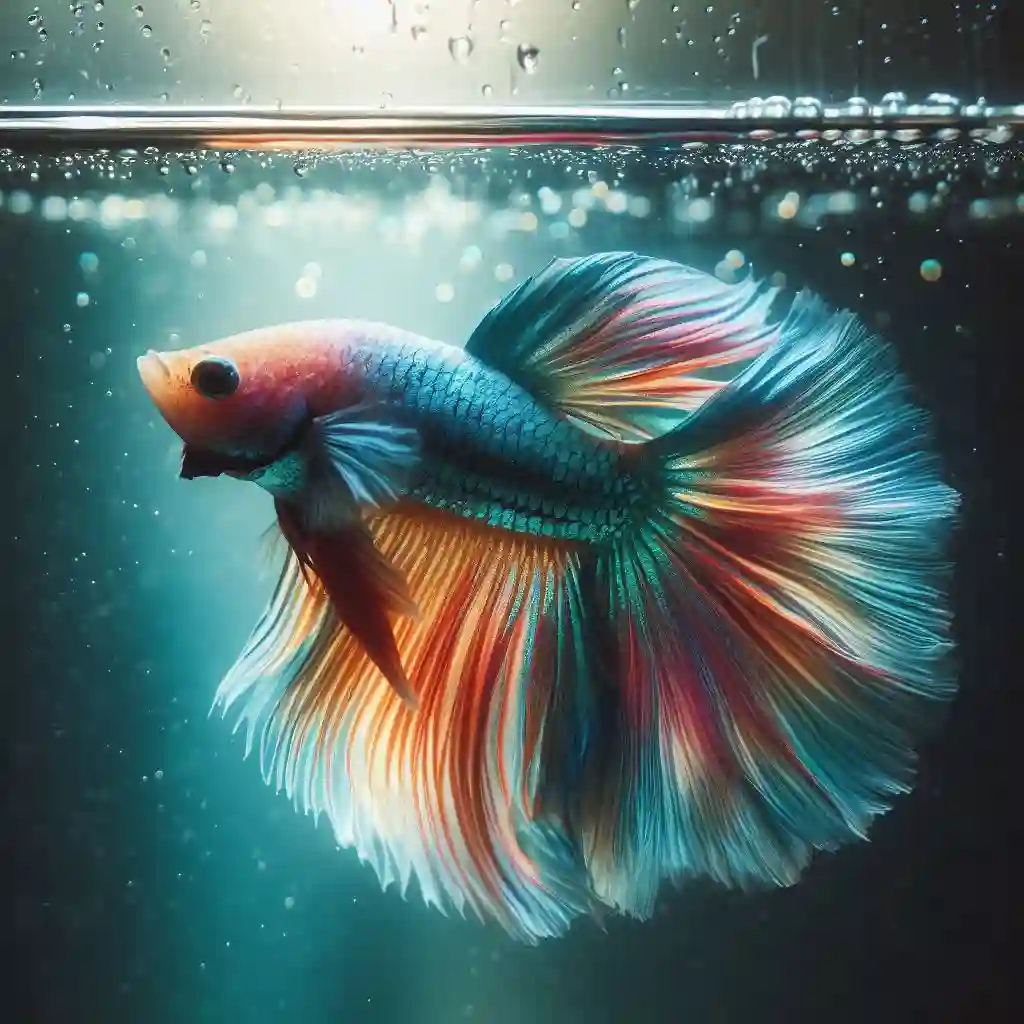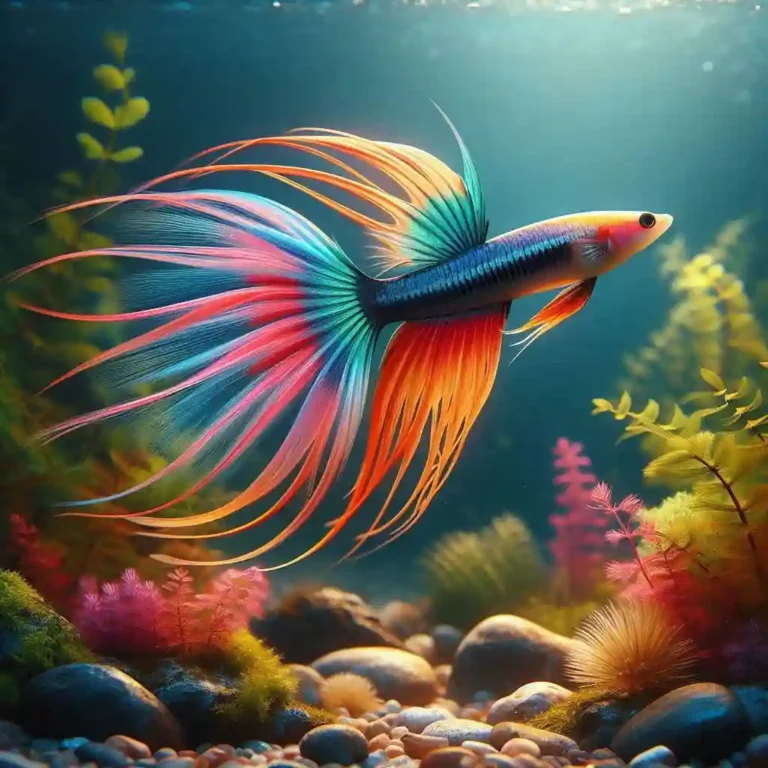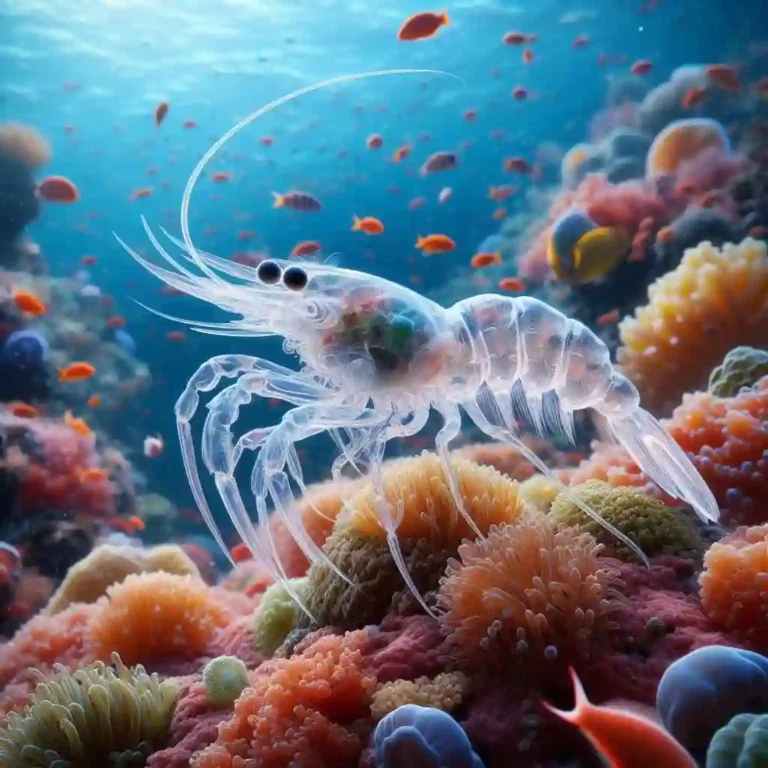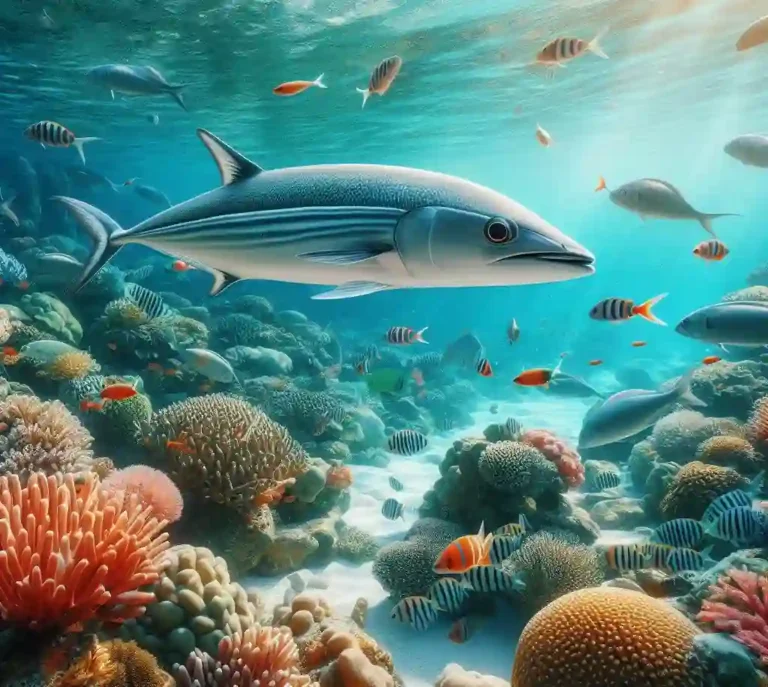Why Fish Staying at Top of Tank: An Informative Guide
Why Fish Staying at Top of Tank: Have you ever noticed your fish constantly staying at the top of the tank?
In this informative guide, we will delve into the reasons why fish may exhibit this behavior and explore potential solutions to address the problem.
Fish Staying at Top of Tank: An Quick Guide
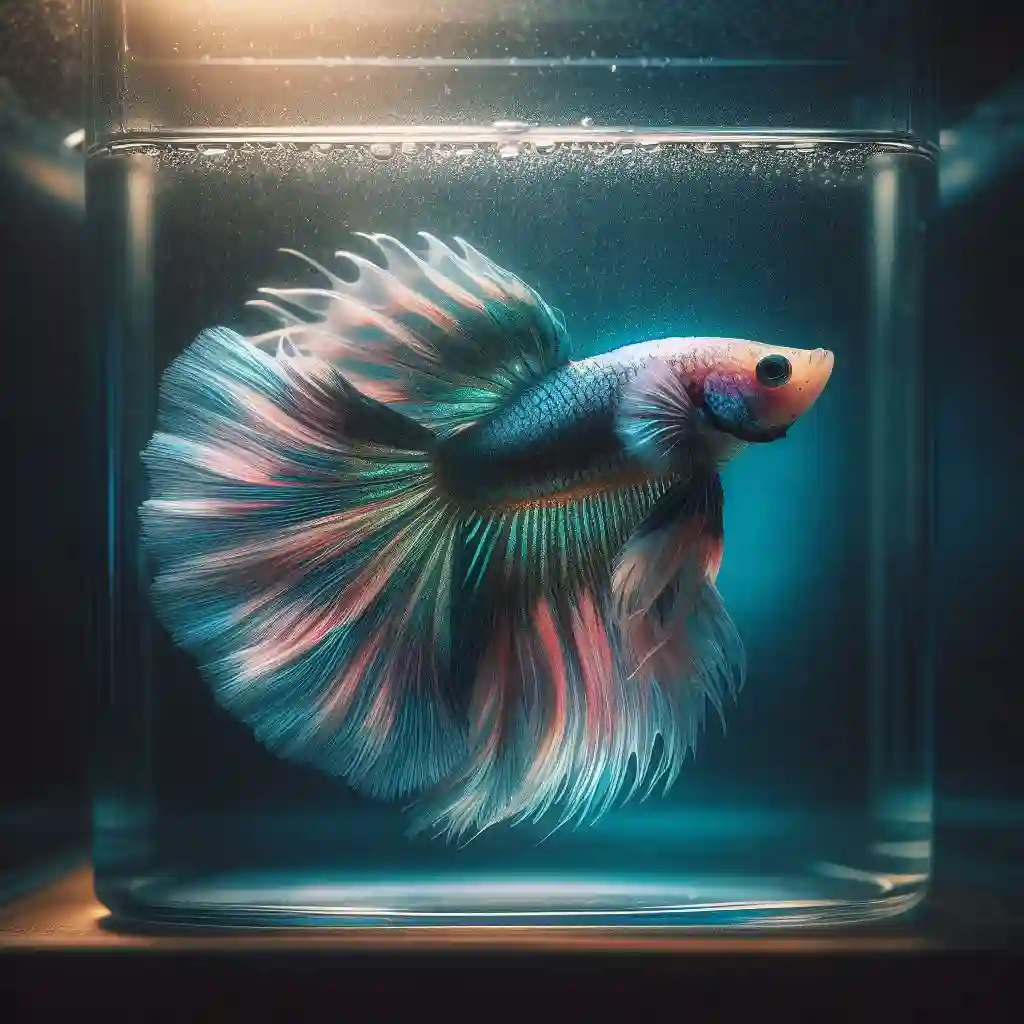
- Observation is Key: Regularly watch your fish’s behavior for any changes, particularly if they are spending excessive time at the tank’s surface.
- Check Oxygen Levels: Insufficient oxygen is a common reason for this behavior. Consider using an air pump or increasing surface agitation to improve oxygenation.
- Assess Water Quality: Perform routine water tests for ammonia, nitrites, and nitrates. Poor water quality can stress fish, driving them to the top.
- Evaluate Tank Conditions: Ensure your tank size is adequate and not overcrowded, as this can impact water quality and oxygen levels.
- Review Feeding Practices: Overfeeding can deteriorate water quality. Ensure you are feeding properly and with the correct amount of food.
- Consider Lighting and Environment: Incorrect lighting and a lack of hiding places can cause stress. Adjust lighting and add plants or decorations for shelter.
- Identify Stress or Illness: Look for other signs of disease or stress, such as lethargy or appetite loss. Consult with a vet if you suspect illness.
- Understand Species-Specific Behaviors: Some fish naturally prefer the top of the tank. Research the species you own to differentiate between normal behavior and signs of distress.
The Basics of Aquatic Behavior
In the world of aquatics, fish exhibit a vast array of behaviors that are as diverse as the species themselves. These behaviors are often reflective of their health, environmental satisfaction, and overall well-being.
Fish, in their natural habitats, navigate through various water columns, seeking food, shelter, and mates. This dynamic movement is an integral part of their survival and indicates a healthy ecosystem.
When fish deviate from these patterns, such as consistently remaining at the top of an aquarium, it’s a signal to aquarium keepers that something within their environment may be amiss. Recognizing and understanding these behavioral cues are essential for maintaining a healthy aquatic habitat.
Observing your fish’s behavior regularly can provide insights into their needs and any adjustments that may be required to emulate their natural living conditions more closely.
Insufficient Oxygen Levels in the Water
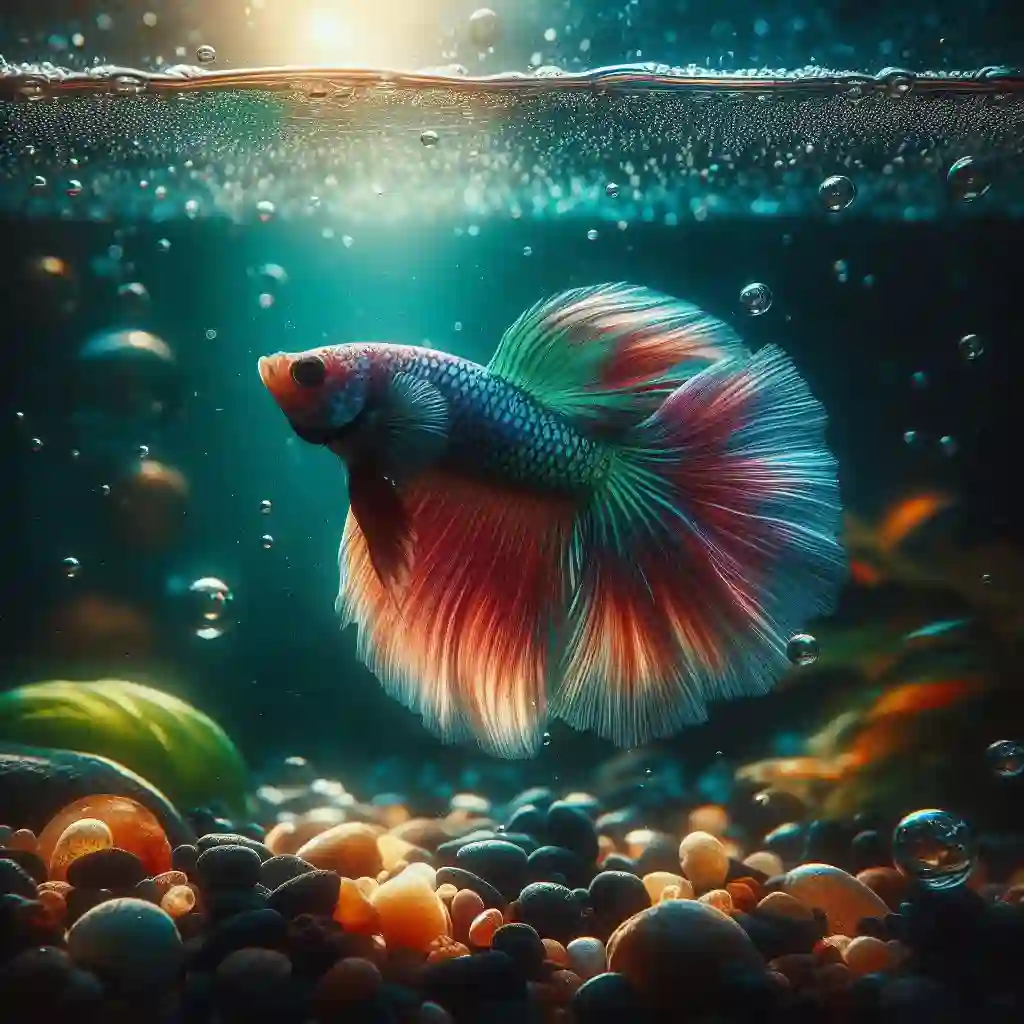
A common cause for fish to remain near the aquarium’s surface is the struggle to find sufficient oxygen. In their relentless quest for oxygen, fish are often observed swimming at the top, where the water meets air, maximizing their oxygen intake.
This behavior signals a reduction in the water’s oxygen content, which could stem from several factors, including inadequate aeration and the repercussions of overstocking the tank.
The introduction of air pumps or increasing surface agitation can significantly enhance oxygen dissolution in the water, offering a more breathable environment for your aquatic inhabitants.
Moreover, ensuring the tank isn’t overcrowded allows for better oxygen distribution, aiding in the maintenance of a healthier aquatic ecosystem. These measures can help mitigate low oxygen levels, encouraging fish to resume more natural swimming patterns and behaviors within the tank.
Water Quality and Its Impact
Water quality is paramount for the vitality of aquarium fish. Elevated levels of toxins such as ammonia, nitrites, and nitrates can provoke stress and lead to concerning behaviors, including fish congregating at the tank’s surface.
These adverse conditions often stem from infrequent water changes, overfeeding, and inadequate filtration. To combat these issues, it’s crucial to establish a consistent water testing routine, ensuring the aquatic environment remains safe and healthy for its inhabitants.
This includes conducting regular checks for harmful substances and managing the aquarium’s bioload by controlling the amount of waste produced.
Implementing these practices helps in maintaining optimal water conditions, thereby preventing the detrimental effects poor water quality can have on fish behavior.
Disease and Stress Factors
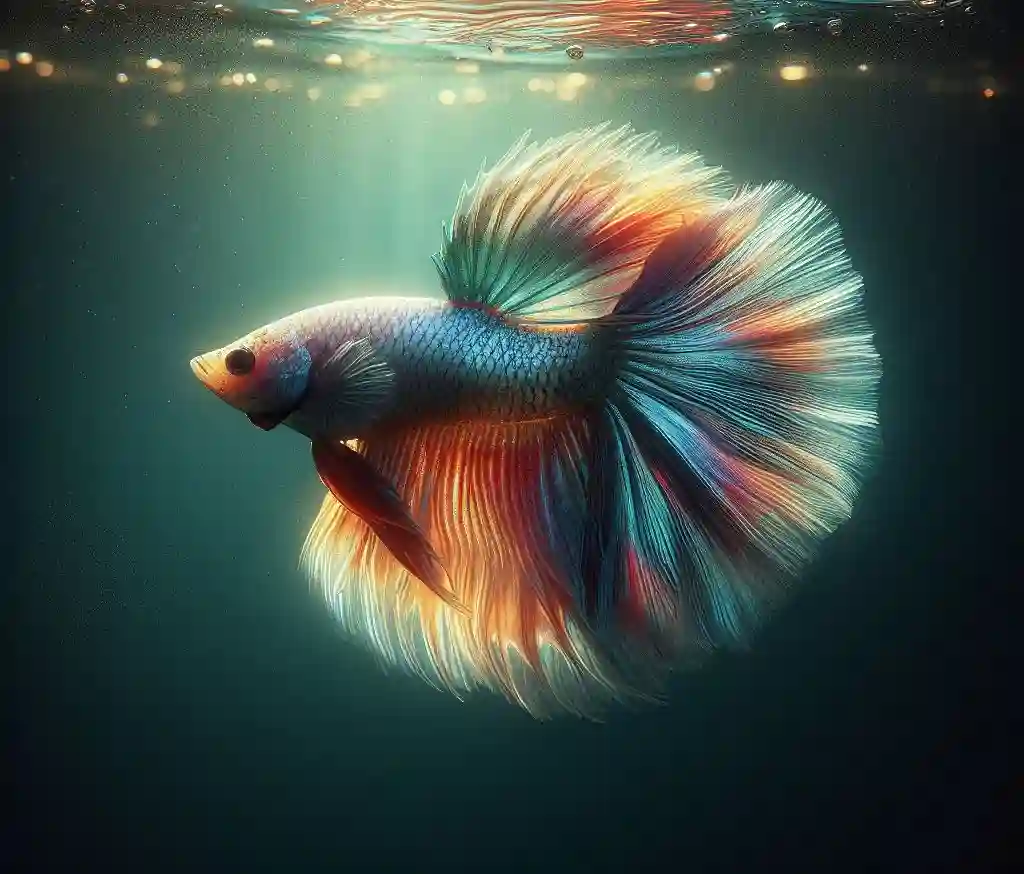
Abnormal swimming patterns, such as remaining near the tank’s surface, could signify health issues, including disease or stress among fish. A variety of factors can contribute to such stressors, encompassing both environmental conditions and the presence of pathogens.
Parasitic infections and bacterial diseases are common culprits that lead to unusual behaviors. These conditions may manifest through additional symptoms, such as lethargy, loss of appetite, or visible marks on the body, prompting immediate action to identify and treat the cause.
Environmental stress can also play a significant role, triggered by sudden changes in water temperature, pH levels, or exposure to toxins. Vigilant observation of your fish’s behavior and physical appearance is crucial for early detection of potential health problems.
Taking steps to ensure a stable and healthy environment can minimize stress, reducing the risk of disease and supporting the well-being of your aquatic friends.
Tank Size and Its Importance
Choosing the right tank size is vital for the health and happiness of your aquarium fish. Overcrowding not only leads to competition for essential resources like food and oxygen but also increases the likelihood of stress and aggressive behavior among tank inhabitants.
Smaller tanks can quickly become polluted, leading to a decline in water quality and oxygen levels, which often forces fish to swim near the surface to breathe easier.
Additionally, a cramped environment restricts the natural swimming behaviors and territorial activities of the fish, potentially exacerbating stress and health issues.
To avoid these problems, it’s imperative to select a tank that provides ample space for the fish to grow, explore, and establish territories, bearing in mind the full adult size and specific space requirements of each species you intend to keep.
This proactive approach helps in creating a more stable and suitable environment for your aquatic pets, enhancing their quality of life.
Improper Feeding and Nutrition
A well-balanced diet is essential for fish to maintain optimal health. Incorrect feeding habits, such as overfeeding, contribute to the deterioration of water quality by increasing the levels of waste, which in turn, affects the oxygen levels and can lead to stress among the tank inhabitants.
On the flip side, underfeeding or providing a diet lacking in necessary nutrients weakens the immune system of fish, making them more prone to diseases.
It’s imperative to follow a disciplined feeding schedule, offering only as much food as your fish can consume in a couple of minutes, and to diversify their diet to meet all nutritional requirements.
Adjusting feeding practices is a straightforward measure that can have immediate positive effects on the well-being of your aquatic pets, encouraging them to explore all regions of the tank rather than staying at the top.
Lighting and its Effects
Lighting plays a crucial role in the well-being of fish, influencing not only their health but also their behavior within the tank. Incorrect lighting can lead to stress, causing fish to seek comfort by staying close to the water’s surface where they might feel safer from perceived threats.
To avoid such issues, it’s important to understand the natural lighting conditions your fish species thrive in. For instance, some fish require dim lighting to mimic their native environments, while others may prefer brighter conditions.
By adjusting the intensity and duration of light in the aquarium, you can create a more conducive environment that encourages fish to utilize the entire tank. Additionally, incorporating areas of shadow and shelter can provide fish with a sense of security, further discouraging them from lingering at the top.
Tailoring the lighting to meet the specific needs of your fish species can make a significant difference in their spatial preferences and overall tank activity.
Hiding Spots and Territorial Issues
The presence or absence of adequate hiding spots within an aquarium can significantly influence fish behavior, particularly their preference for staying near the water’s surface. In a densely populated tank, the struggle for territory becomes more pronounced, leading to stress and aggression among different species.
To mitigate these territorial disputes, it’s vital to design an environment that mimics the natural habitats of the fish, incorporating a variety of plants, rocks, and decorations that serve as hiding places and territorial markers.
This approach not only provides refuge for less dominant fish but also establishes clear boundaries, reducing the likelihood of conflict.
Ensuring each fish has a space to claim as its own can help in maintaining a balanced and peaceful aquarium community, encouraging fish to explore and inhabit all areas of their environment, rather than seeking refuge at the top.
Behavioral Traits of Different Fish Species
Understanding the inherent behavioral traits of the fish species in your aquarium is imperative. Certain fish are known to frequent the upper layers of their habitat, such as top-dwelling species like the Hatchetfish, which are naturally inclined to stay closer to the surface due to their feeding habits and environmental preferences.
Conversely, species like catfish are bottom dwellers, seldom venturing to the tank’s surface unless prompted by specific conditions. Recognizing these natural behaviors is crucial for distinguishing between typical species-specific activity and signs of distress or environmental inadequacy.
Familiarizing yourself with the preferred swimming zones and activities of your aquatic pets can aid in creating a more suitable and stimulating environment tailored to their unique needs, thereby promoting a harmonious and healthy aquarium ecosystem.
Effective Solutions and Preventive Measures
Tackling the issue of fish staying at the top of the tank begins with a comprehensive approach to their care. Engage in routine water quality tests to catch and address harmful changes before they impact fish behavior.
Establish a regular maintenance schedule, including partial water changes and filter checks, to sustain an environment that supports the well-being of your fish. Consider the layout and size of your aquarium, ensuring it meets the space and habitat needs of the species you’re keeping.
Pay close attention to feeding practices to avoid overfeeding and ensure the diet you provide is rich in necessary nutrients. Create a diverse environment with proper lighting, hiding spots, and plants that mirror the natural habitats of your fish, offering them comfort and security.
Through these preventive measures and attentive care, you can create a thriving ecosystem where your fish flourish, moving freely throughout their aquatic home.
FAQs
Why do fish stay at the top of the tank?
Fish may stay at the top of the tank due to insufficient oxygen levels, poor water quality, disease or stress factors, inappropriate tank size or conditions, improper feeding and nutrition, inadequate lighting, lack of hiding spots, territorial issues, or their natural behavioral traits.
How can I increase oxygen levels in my aquarium?
Enhancing oxygen levels can be achieved by introducing air pumps, increasing surface agitation, and ensuring the tank isn’t overcrowded.
What signs indicate poor water quality?
Signs of poor water quality include unusual fish behavior like staying at the top, visible stress, and physical symptoms such as lethargy or loss of appetite. Regular water testing can help identify any issues.
How often should I change the water in my fish tank?
Regular partial water changes are recommended, typically around 10-20% every two weeks, but this can vary based on tank size, population, and filtration efficiency.
What type of lighting is best for my aquarium?
The ideal lighting for your aquarium depends on the specific needs of the fish species you are keeping. Some fish require dim lighting, while others thrive in brighter conditions. Adjust the intensity and duration to mimic natural environments.
Can the wrong tank size affect my fish’s behavior?
Yes, overcrowding or a too-small tank can lead to stress, aggression, and health issues, prompting fish to stay near the water’s surface. Ensure your tank size accommodates the full adult size and space requirements of your species.

Hello, I’m Aria Cooper, the heart and soul behind Swimmy Buddies. As a devoted fish aficionado, I share my aquatic adventures and expertise to inspire your own underwater explorations. 🐠🌊

